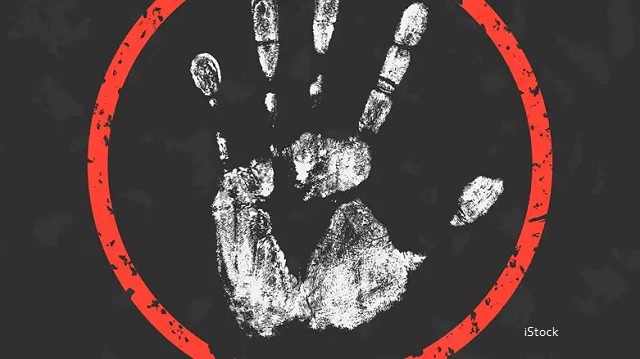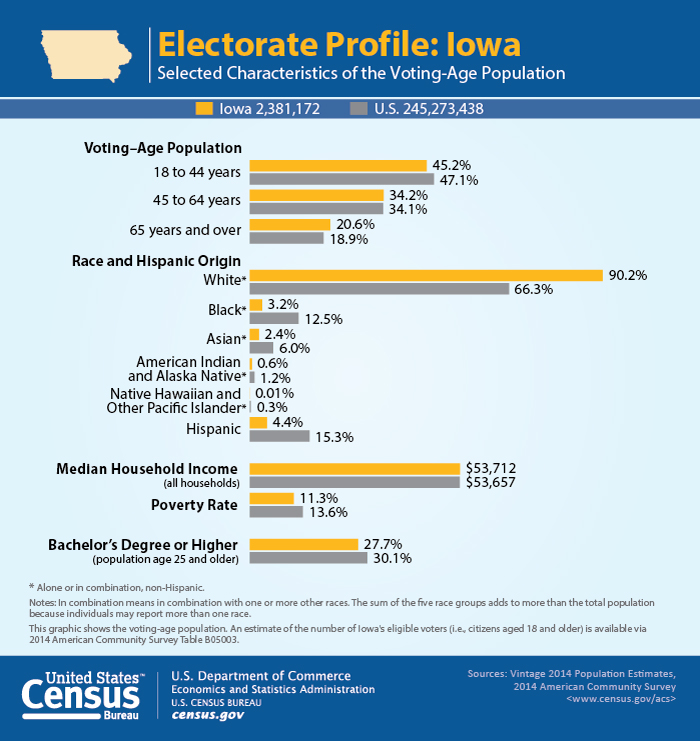Why Is It So Difficult To Define Anti-Semitism?

Even among those who condemn it, there is little consensus about what constitutes antisemitism. Is it disdain for Jews as a faith community or as a people? Is it motivated by hatred of doctrine or ethnicity?
Antisemitism has been around since the dawn of Jewish history and yet the mainstream media only found it newsworthy after October 7th. Since then, it has become ubiquitous in universities and pro-Hamas demonstrations – where progressives celebrate terrorism and demand the destruction of Israel and the Jews – and in a Democratic Party where progressive radicals demonize the Jewish State.
But even among those who condemn it, there is little consensus about what constitutes antisemitism. Is it disdain for Jews as a faith community or as a people? Is it motivated by hatred of doctrine or ethnicity?
Those who mistake it simply as prejudice against a faith do not understand the nature of Jewish identity, which is at once religious, ethnic, and national. The definition of hatred, it seems, is in the eye of the beholder.
Some antisemitism is religious to be sure, particularly among other Abrahamic faiths that must disparage Jews and Judaism to justify their pretensions to be the fulfillment of Jewish scripture and prophecy. Christians and Muslims both acknowledge the holiness of Tanakh and yet deviate significantly from it. To rationalize their divergence from Hebrew scripture, they must claim they supplanted Judaism or that the Jews corrupted their own scriptures.
Christianity
The Christian gospels, for example, are replete with anti-Jewish invective, associating Jews with darkness, evil, lies, deceit, and Satan (e.g., John 8:37-39; 44-47), blood libel and murder of the Prophets (e.g., Matthew 23:31-33; 1 Thessalonians 2), and hereditary blood guilt (Matthew 27:25). Assertions of insidious influence and control are central to the myth that the Jews compelled Pontious Pilate to kill Jesus at a time when Rome occupied Judea and the Sanhedrin had no leverage or authority to impose or even demand the death penalty. The passion narratives likewise contain demonic anti-Jewish caricatures that inspired persecution and massacres throughout Christian Europe.
Furthermore, the New Testament alters Tanakh (e.g., misstating the number of people who accompanied Yacov to Egypt and the burial place of the Patriarchs), misquotes the psalms and Prophets, and decontextualizes passages from Torah.
Islam
Despite the myth of Muslim tolerance, Islamic scripture is not much better. Indeed, the Quran is equally unflattering when it accuses the Jews of “unbelief” and murdering their Prophets (as does Christian scripture): “So, for their breaking the compact, and disbelieving in the signs of God, and slaying the Prophets without right, and for their saying, ‘Our hearts are uncircumcised’ – nay, but God sealed them for their unbelief, so they believe not, except a few…” (Sura 4:155).
It also accuses the Jews of corruption and deceit:
“And We decreed for the Children of Israel in the Book: ‘You shall do corruption in the earth twice…So, when the promise of the first of these came to pass, We sent against you servants of Ours, men of great might, and they went through the habitations, and it was a promise performed. Then We gave back to you the turn to prevail over them…Then, when the promise of the second came to pass, We sent against you Our servants to discountenance you, and to enter the Temple, as they entered it the first time.’” (17:4-7)
Moreover, Jews are frequently accused of scriptural corruption. “People of the Book, now there has come to you Our Messenger, making clear to you many things you have been concealing of the Book, and effacing many things…” (5:15); “God assail them! How they are perverted…They have taken their rabbis and their monks as Lords apart from God.” (9:31.) Claims of textual manipulation seem necessary for explaining away fundamental discrepancies with Tanakh, for example, that Yishmael, not Yitzchak, was bound by Avraham on Moriah.
Racial and ethnic components
Christians and Muslims often misstate Jewish text, doctrine, and history. But conceding deviations from the original Hebrew would undercut their doctrinal narratives. So, both their traditions must accuse the Jews of corruption and deceit, using themes and stereotypes that have fueled Jew-hatred throughout Christendom and the Islamic world for centuries.
Historically, the aim was not merely to disparage Jewish belief, but to devalue or subjugate the Jews as a people; and this is illustrated by the persistence of antisemitism against those who submitted to Christianity or Islam (usually on pain of death). The ethnic and racial components of antisemitism are evidenced by its continuation even after the outward elimination of doctrinal differences.
Catholic antisemitism always had a racial component. On the Iberian Peninsula, for example, people of Jewish heritage were often banned from professions and public office because of ancestry, not belief. Even before the Jews were exiled from Spain per the Edict of Expulsion in 1492 (and later from Portugal), those who were forcibly baptized and designated “New Christians” were identified by their tainted blood. This was first codified in 1449 by the “Statute of Blood Purity” in Toledo; and while some church leaders denounced such enactments, the Inquisition embraced them when it infiltrated Spain in 1478, and later Portugal, Peru, and Mexico in 1536, 1570, and 1571, respectively.
Clearly, racial antisemitism existed long before the Nazis; and it also infected Protestantism.
In targeting Jews through “friendship evangelism,” missionaries strenuously deny Protestant complicity in antisemitism by blaming Catholicism for the most pernicious forms of Jew-hatred. However, Martin Luther embraced the Church’s racial antisemitism and incorporated it in his vile screed, “On the Jews and their Lies,” which advocated expulsion, enslavement, and extermination. These tropes were later adopted by other non-Catholics, many of whom were complicit or complacent during the Holocaust.
Then there are doctrines like replacement theology and evangelical fronts like the Lausanne Movement. Whereas replacement doctrine seeks to displace actual Jews (defined by ancestry and their relationship with G-d) with a faith community of self-defined “spiritual Jews” who falsely claim covenantal status, Lausanne and similar movements actively engage in Jewish evangelism while claiming to love Israel and the Jews. Though antithetical to Torah, both recognize the Jews as a people, not merely a faith community.
And this recognition had parallels in the Islamic world, where forcibly converted Jews often stayed connected to their heritage, married among their own, continued observing Jewish rites and customs in secret – and remained under lingering suspicion. Like the Anusim (Conversos) of Christian Europe, many of these forced converts forgot their heritage while paradoxically maintaining it through rituals and marriage restrictions they continued to observe but no longer understood.
Xenophobia
When the fathers of European Enlightenment rejected the primacy of faith and national allegiances, they were offended by the Jews’ continuing embrace of their religious, ethnic, and national identity. The refusal to assimilate rendered them strangers wherever their migrations took them, arousing xenophobia with religious and racial overtones. And their image as quintessential outsiders was reinforced by their faithfulness to Torah, Jewish language, and ancient blood ties – all of which distinguished them from their host societies and reinforced stereotypes that continued to fester and mutate.
Denial of connection to Israel
A unique form of antisemitism today is the denial of the Jews’ history and connection to Israel. Progressives often maintain that Jewish identity is “only religious” to delegitimize it compared to Palestinian national identity. This theme is echoed in the PA Charter, which denies the Jews’ national history and deems them colonial occupiers.
The claim that Jewishness is “just a religion,” however, is contradicted by the scriptural, historical, and archeological records, which confirm Jewish ethnicity, national heritage, and origins in Israel. The record does not similarly validate Palestinian Arab identity, which is a modern political construct.
Jewish children
Whereas the roots of antisemitism are disparate, they are not mutually exclusive, whether based on religion, ethnicity, racial theory, or xenophobia; and regardless of ideology, it is exacerbated by the Jewish refusal to assimilate. Unfortunately, many opponents of antisemitism unwittingly help perpetuate it through ignorance of its historical and theological foundations.
Even Jewish children understand this.
My generation was born less than twenty years after the Holocaust. Though my family lost collateral relatives to the Nazis and their Ukrainian accomplices, many of my friends’ parents were Holocaust survivors who constituted a significant portion of our community. And they informed our understanding of antisemitism as simultaneously religious, ethnic, national, and racial – which colored our self-perceptions and even our sense of play.
I grew up in a neighborhood where the streets had storm-sewers with removeable grates that we could crawl through. While other kids played “cops and robbers,” we often navigated our way underground playing “escape from the ghetto.” And the brutal kidnapping of the Bibas family brings that “game” to life.
Clearly, even children experience existential angst, and ours was shaped by an awareness of antisemitism in all its manifestations – something adult academics, politicians, and media personalities never seem to grasp.
But then again, perhaps it takes the untainted sensibilities of a child to recognize the nuanced complexities of Jew-hatred and understand its scope.
Copyright 2024. Matthew Hausman, J.D. All rights reserved.


